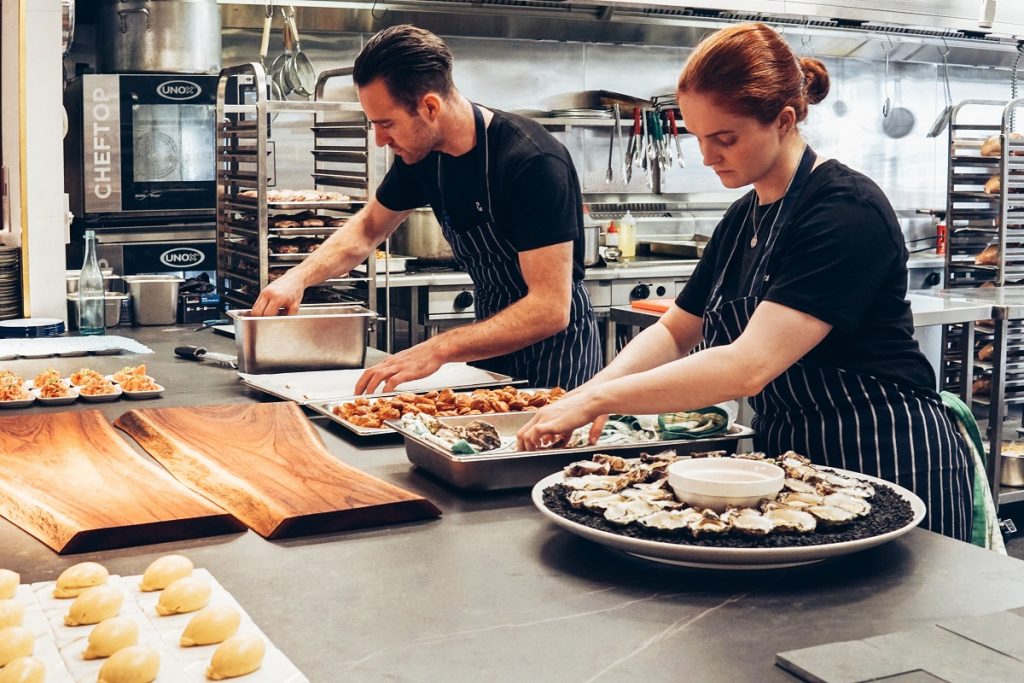The foodservice industry is incredibly adaptive in terms of food, service, and technology. Every year, this industry comes up with new ways to improve customer service and experiences. It is important to know these trends because they continue to play an increasingly important role in the sector.
In this blog post, we’ll go over some major trends, from the rising technology in the food and beverage industry to what today’s consumers expect.
Focus on Plant-Forward Food
As everyone in the industry is aware of the growing plant-based trend, 2021 will see an increase in demand for plant-forward products, taking plant-based to the next level.
That’s correct, plant-based eating has become mainstream, resulting in its rapid rise throughout a wider range of market sectors, particularly when it comes to alternative indulgence and proteins.
In fact, the average yearly growth in plant-based food and beverage sales is 27%. Currently, there are many consumers worldwide who prefer plant-based alternatives because they believe they taste better.
This opens up a lot of opportunities for brands that work with ingredient companies that specialize in plant-based flavor solutions.
Equipment that Reduces Human Labor
Since today’s business spaces are getting smaller, any foodservice technology that reduces labor and enhances efficiency is a must-have. As a result, equipment that is smarter, smaller, and easier to operate is becoming increasingly popular. The trend is for equipment that saves time and makes training easier.
For example, if you manage a water station, liquid filling equipment is great since it automates the process and can fill 2 to 12 filling heads at once, minimizing the need for workers to operate the equipment. It is practical and can help you save a lot of money for your company.
Automated Technology
Fast service, customization, and convenience are expected in many aspects of people’s lives, and this includes a more convenient and personalized dining experience. As a result, the foodservice industry is heading in the direction of a highly automated technology.
Self-serve kiosks and touchscreens are being used by restaurant chains, while chatbots and artificial intelligence are making strides into the business to take orders from various platforms, including social media and smart TVs. Some companies have also tested using drone delivery.
Online reservation systems and technology in full-service restaurants are the next automation technology trends to watch. Guests want to place their orders and pay without having to wait for staff. Restaurants may gain a better understanding of their customers by using technology and the data it collects about them.
Multi-Functional and Visually Appealing Cooking Equipment
More kitchens are adopting open concepts prep as the trend toward natural products and clean menus continues. Customers want to see where their food comes from and feel like they’re a part of the process, so restaurants must stay up by incorporating innovative cooking equipment.

One trend you may expect to see this year is visually pleasing cooking equipment. Ovens and fryers in vivid colors are examples of modern designs. Instead of bulky buttons and switches, the new technology has sleek touchscreens.
Multi-functional cooking equipment is another trend to keep an eye out for in the kitchen. Restaurant owners strive to maximize their kitchen space, and one way they may do so is by deploying equipment that can perform multiple tasks.
Combination and rapid cook ovens which have many cooking processes for making various foods are among the most popular kitchen appliances.
Online Delivery and Going Cashless
In the foodservice industry, safety has always been a top priority but it has become even more so during the pandemic. The food industry makes a significant investment in contactless technology as they seek to improve customer experience and comply with evolving safety regulations.
Touchless payments, digital and QR-code menus, and other contactless ordering and payment methods will become more common.
Restaurants are starting to phase cash out of their operations. This saves them time by eliminating bank deposits, and it also has obvious operational benefits: fewer handling errors and theft occurrences, and more transparency and liquidity instead.
In any case, the industry is moving toward a cashless future, with PIN-less card contact payments like ApplePay making purchases simple.
Waste Reduction
Food waste reduction can help businesses save money while also helping the environment. As Nestlé does, they use some by-products as a substitute for other ingredients. This can help to strengthen the supply chain while also providing new revenue opportunities.
Also, what is the best option if reducing packaging isn’t the answer? Some suggestions include clearer expiration dates, better cooking, thawing, and freezing instructions, and making it easier to dispense food without compromising the remaining unused food in the packing.

